Saying Goodbye

I had breakfast at the Vilamoura Beach Hotel this morning and then hugged my tour group goodbye. I even got Portuguese kisses from Rui and Manuel––what a great country Portugal is! The tour was going back to Lisbon, via Setubal and over the Serra da Arrabida (where I was earlier on a tour with Inside Lisbon––My Albums, page 31, Portugal: Arrabida, Sesimbra). The tour would end in Lisbon. I went outside the hotel to watch the bus leave.

Saying Goodbye
Eastern Algarve
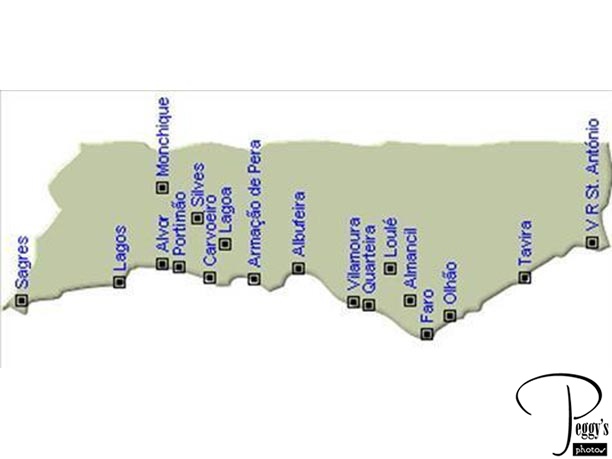
Today I was going on a one–day escorted tour to the Eastern Algarve––the area of the Algarve from Faro to the Spanish border. We were to visit Faro, Olhao, Santa Luzia (between Olhao and Tavira), and Tavira. The tour was called “Unspoilt Algarve.” I was one of the last people to be picked up as the bus had already picked up other passengers from other Algarve resorts. The bus was full. When I got on the bus, I really missed seeing Manuel in the driver’s seat, Rui making sure that we were all aboard, and all my tour group. During the day I realized that I was the only American on the tour––my tourmates were almost all from the U.K. with some Canadians also present.

Eastern Algarve
Faro
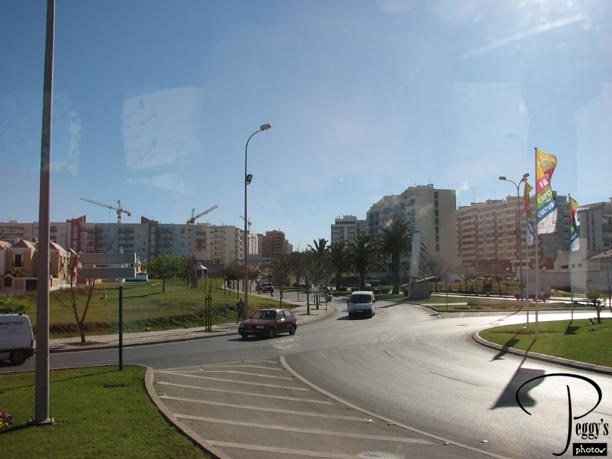
Entering the small city of Faro, the Algarve’s largest town and its capital since 1756. The airport serving the Algarve is also in Faro.

Faro
Faro
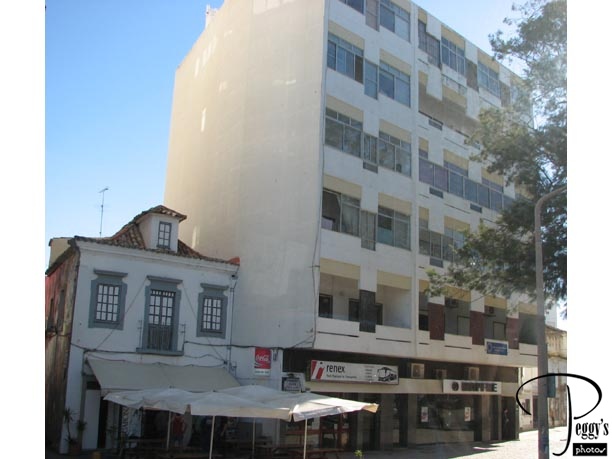
A combination of the old and the new.

Faro
Faro
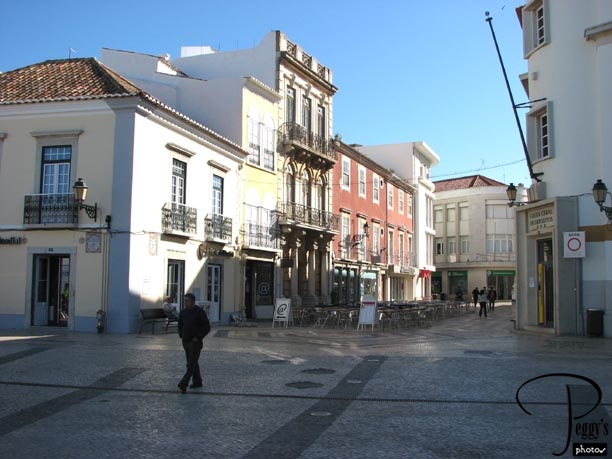
Our tour was to visit Faro’s Old City. Photo: Entering the Old City.

Faro
Faro
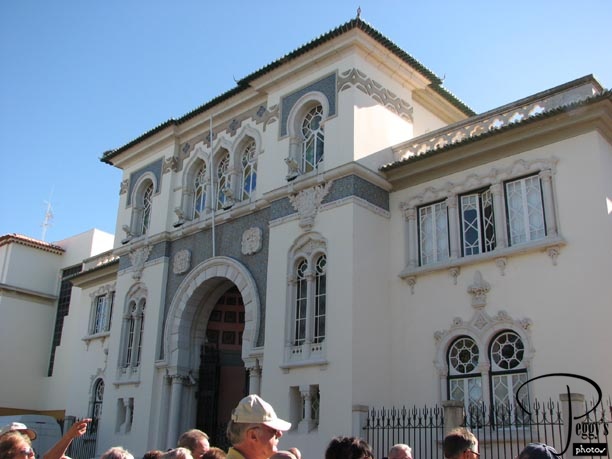
We walked past this beautiful building.

Faro
Faro
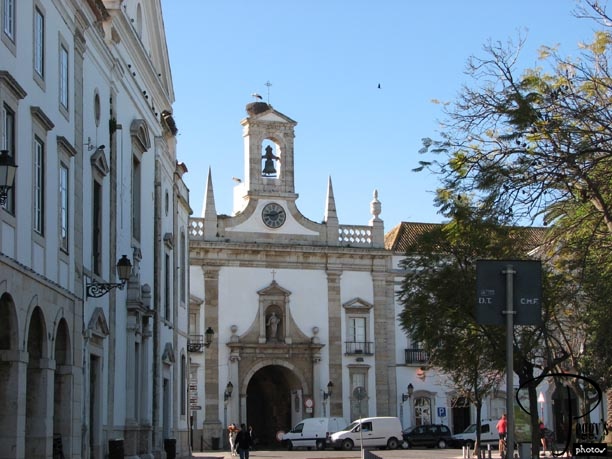
Close–up of the front of the building.

Faro
Faro
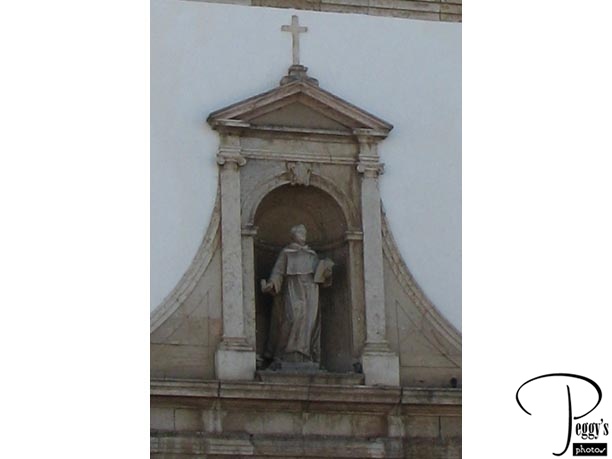
The Arco da Vila, the 19th–century Moorish style entryway.

Faro
Faro
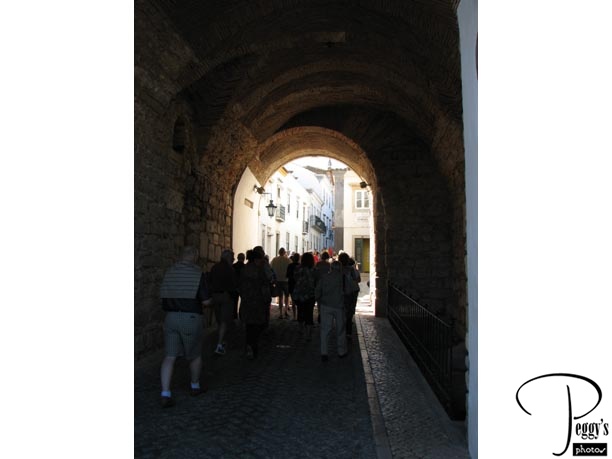
Walking through the Arco da Vila.

Faro
Faro
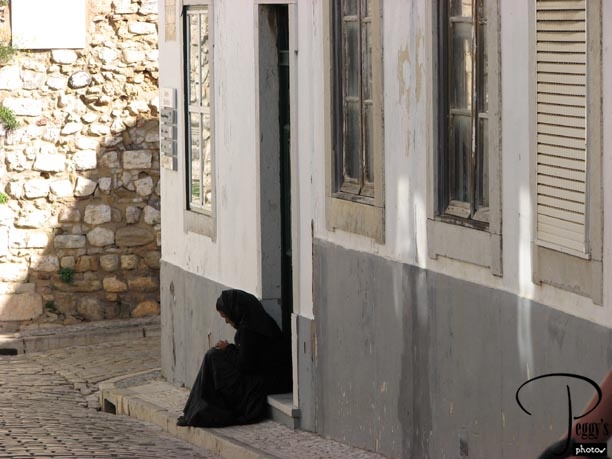
A very sad sight on our walk.

Faro
Faro

The Se (main cathedral), dating back to the middle 1600s, in the Largo de Se.

Faro
Faro
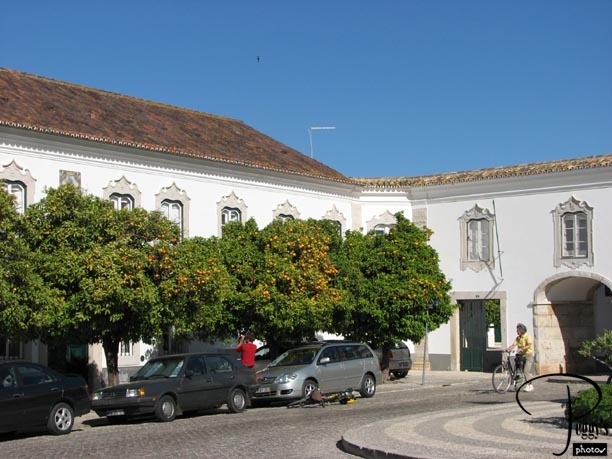
Orange trees are in front of the 18th–century bishop’s palace in the Largo de Se.

Faro
Faro
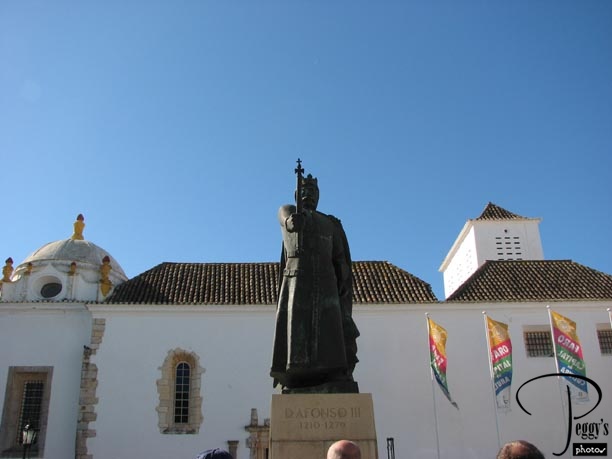
Statue of King Alfonso III in the square. He captured Faro from the Moors in 1249.

Faro
Faro
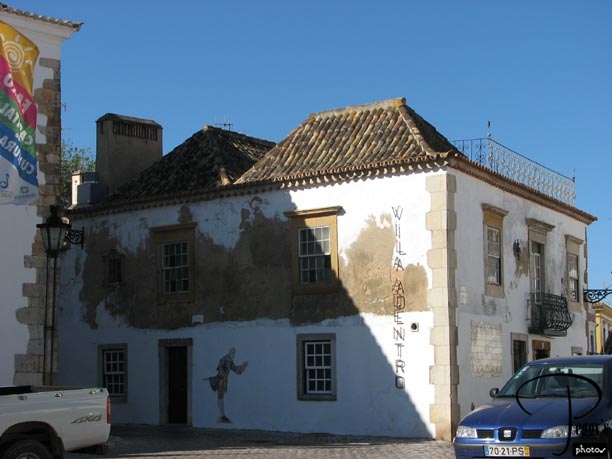
Building seen on our walk. Note the double roof. We saw more of these roofs later in the day in Tavira. It is believed that the roofs were built in this shape to dispose easily of torrential rainwater.

Faro
Faro
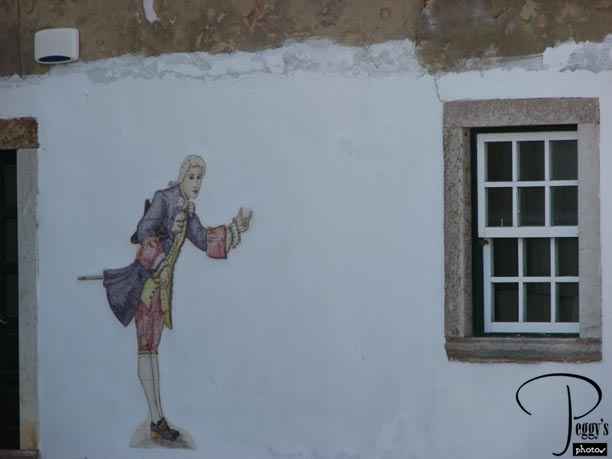
Close–up of figure on side of the building in the last photo.

Faro
Faro
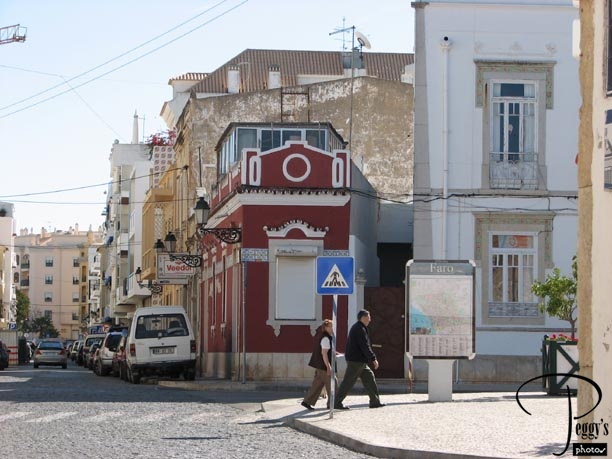
Interesting house seen on our walk.

Faro
Faro
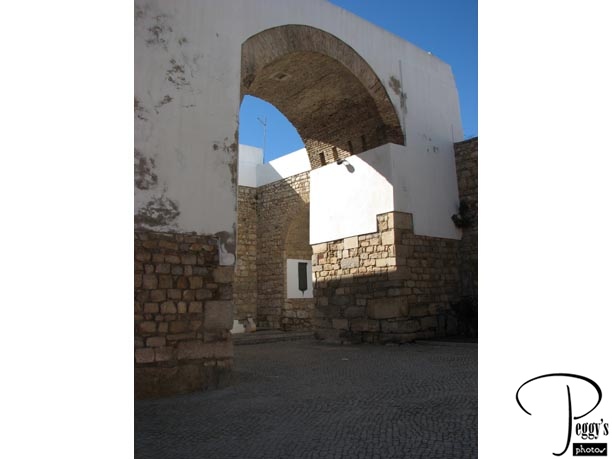
Another arch, probably part of the original city walls.

Faro
Faro
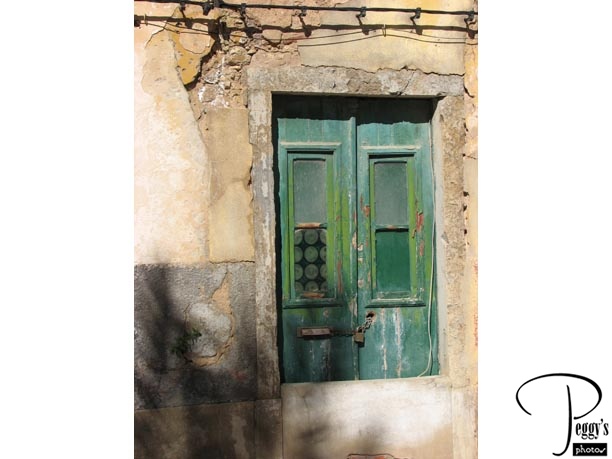
Our tour guide pointed out a window left from Moorish times.

Faro
Faro

Further on our walk.

Faro
Faro
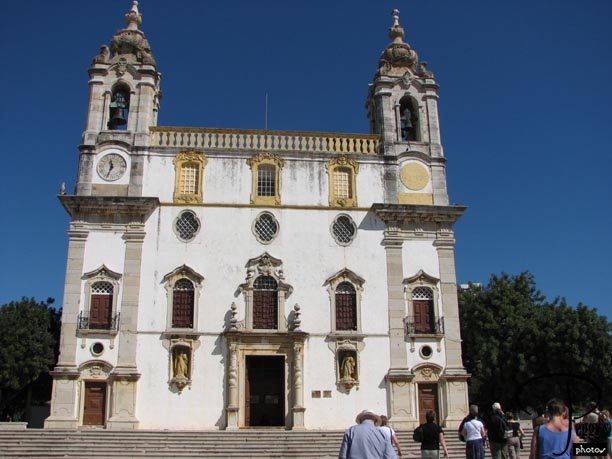
The Igreja do Carmo, begun in 1713, with a Baroque facade.

Faro
Faro
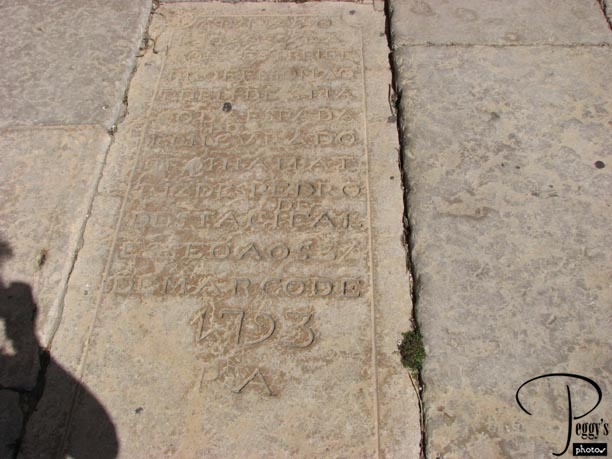
Grave marker from 1793 outside the church.

Faro
Faro

Inside the Igreja do Carmo.

Faro
Faro
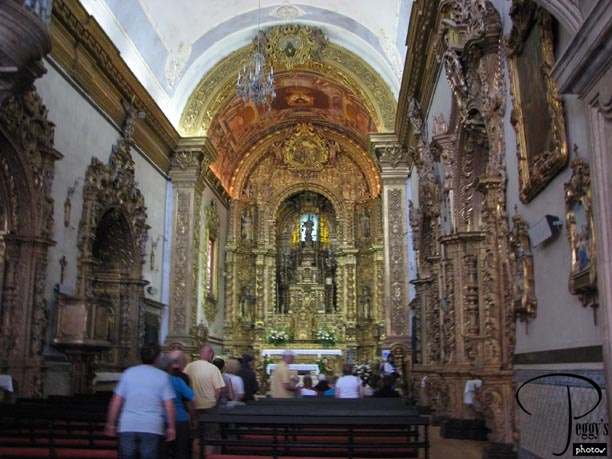
Inside the church––very Baroque with much Brazilian gold leaf.

Faro
Faro
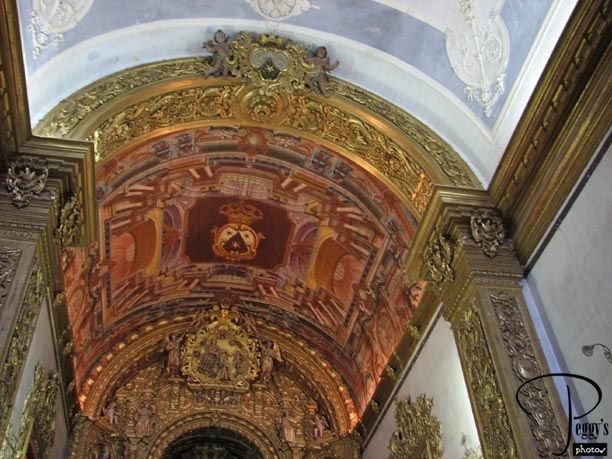
The ceiling.

Faro
Faro
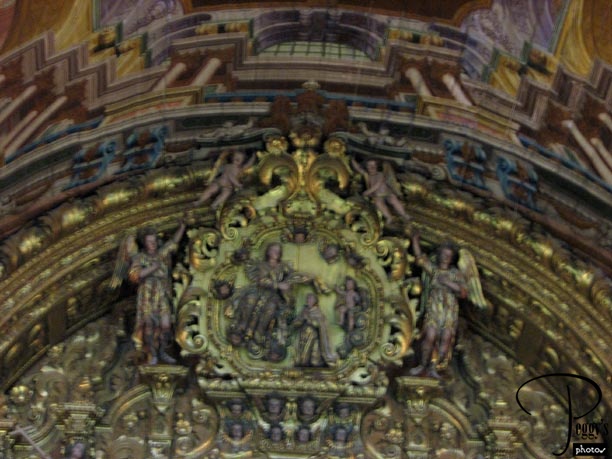
More gold leaf.

Faro
Faro
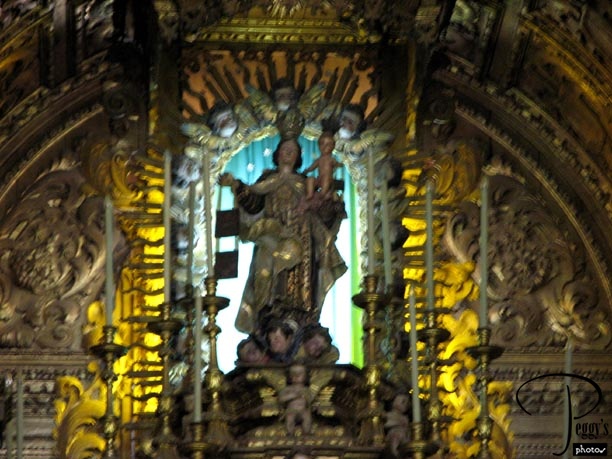
And more.

Faro
Faro
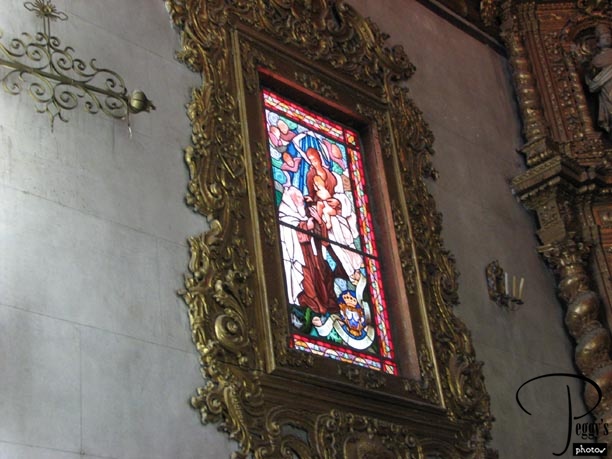
The first stained–glass window that I have seen with a gold leaf picture frame around it.

Faro
Faro
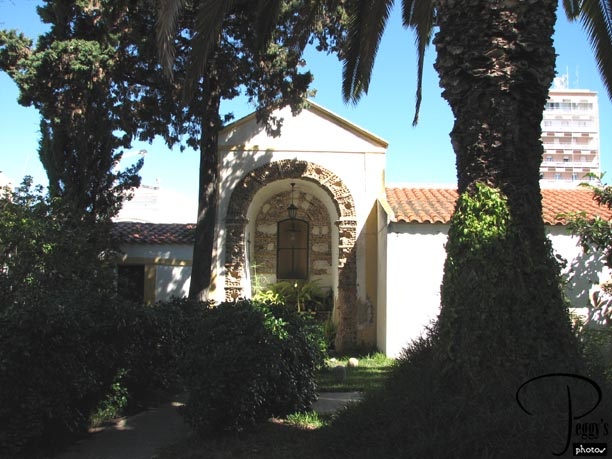
There is a Chapel of Bones (Capela dos Ossos) at the Igreja do Carmo, built in 1816. The skulls and bones were taken from a friars cemetery. If you don’t want to view the Chapel of Bones, skip the next four photos.

Faro
Faro
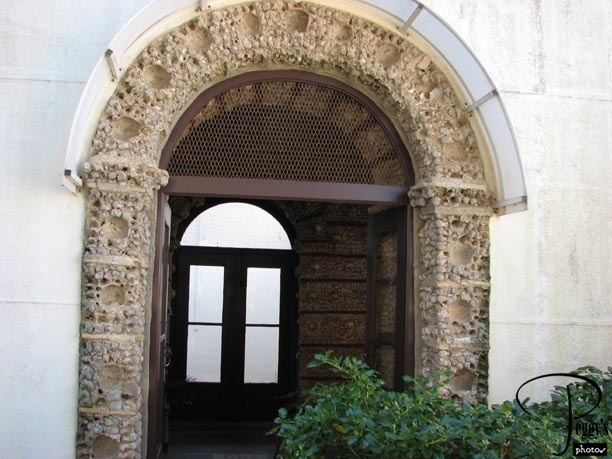
Entrance to the small Chapel of Bones. After already visiting a Chapel of Bones in Evora two days ago, I was fully prepared for this one. In fact, I was able to view this one with an unemotional detachment.

Faro
Faro
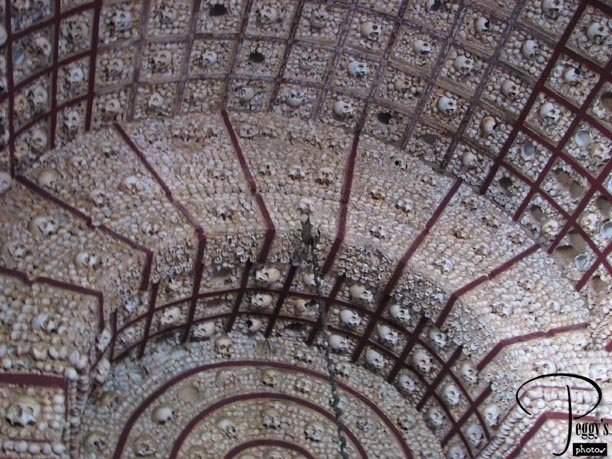
Inside the Chapel of Bones. The walls of the chapel were not roped off as they were in Evora’s chapel. Here you could touch the bones if you wished.

Faro
Faro
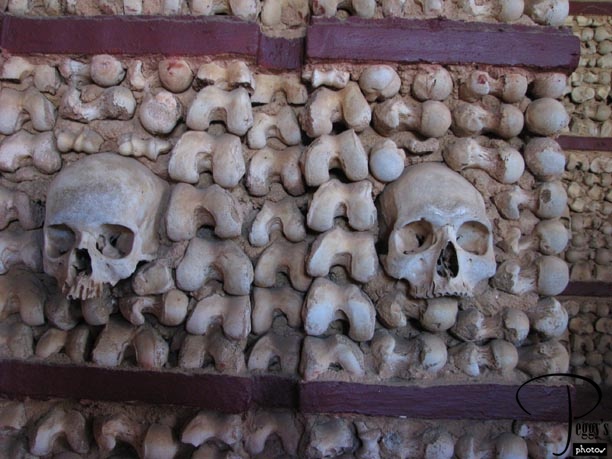
Inside the Chapel of Bones.

Faro
Faro
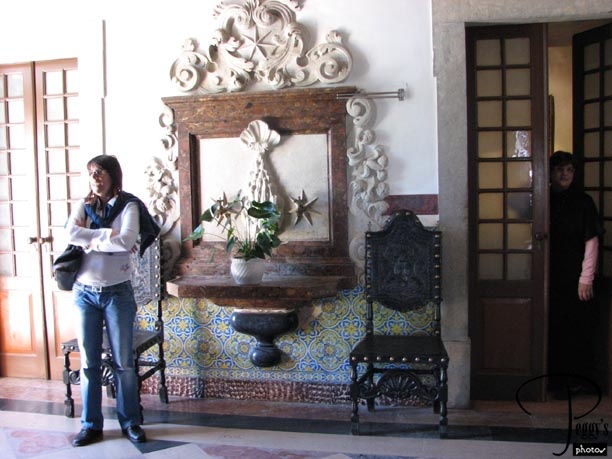
Our tour guide Anna waiting for us.

Faro
On the Road
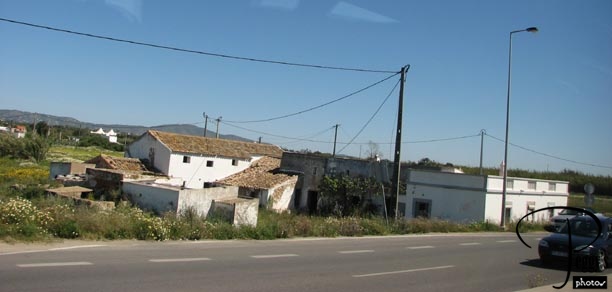
We took the old road today. Seen along the way.

On the Road
Olhao
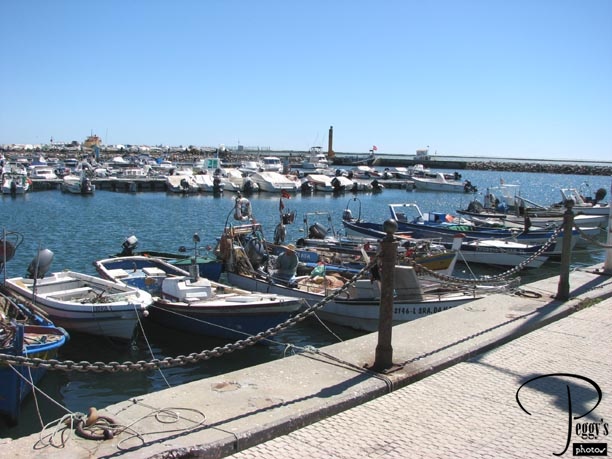
Our next stop was at Olhao, which means “Big Eye.” It is a large fishing port and tuna and sardine canning center. Photo: boats along the harbor.

Olhao
Olhao
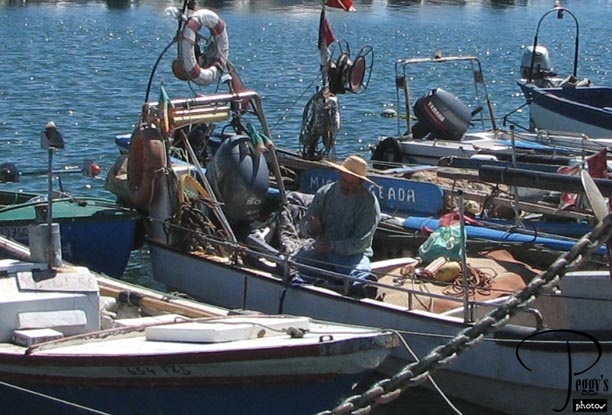
Close–up of one of the fishing boats.

Olhao
Olhao
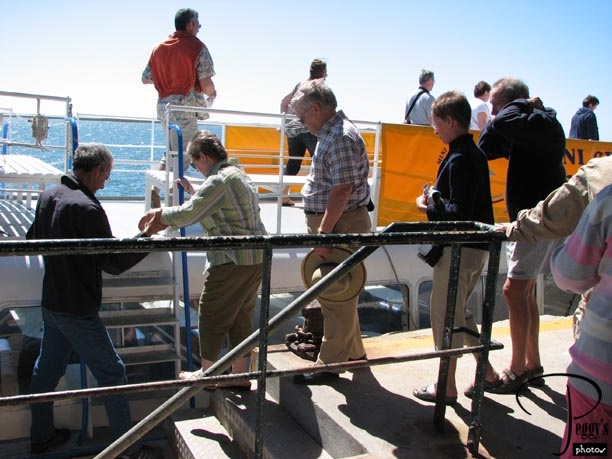
Getting on a boat for a cruise.

Olhao
Olhao
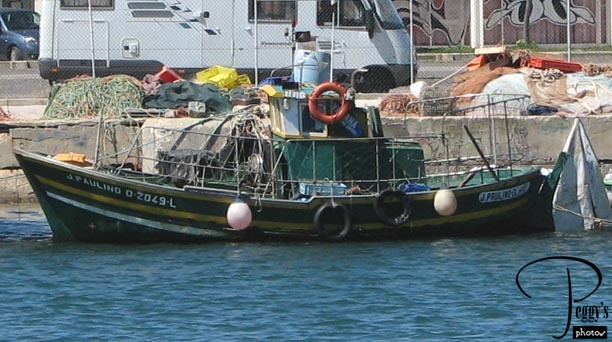
Fishing boat seen on our cruise.

Olhao
Olhao
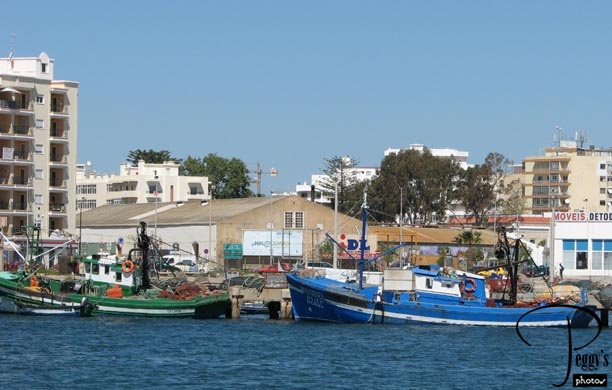
More fishing boats.

Olhao
Olhao
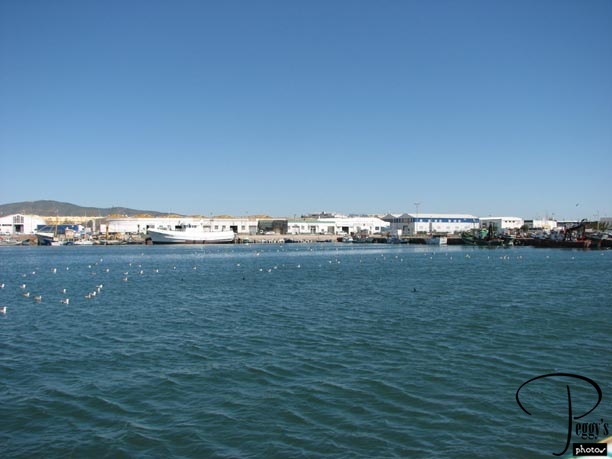
Going into a harbor where the fish are unloaded.

Olhao
Olhao
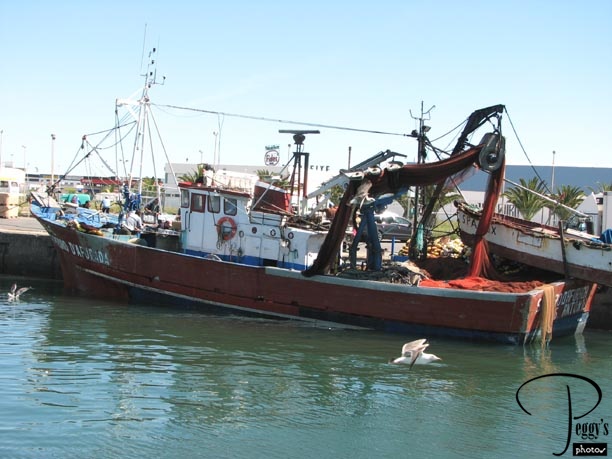
Fishing boat being unloaded of its day’s catch.

Olhao
Olhao
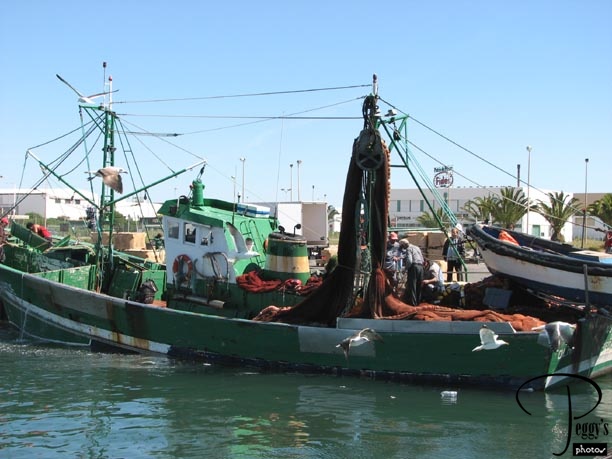
Another fishing boat. The seagulls know where the action is.

Olhao
Olhao
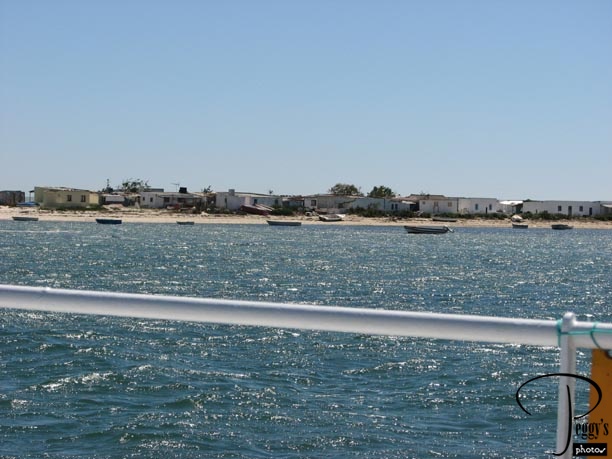
Across the harbors are a number of sandbars. The fishermen live on this sandbar.

Olhao
Olhao
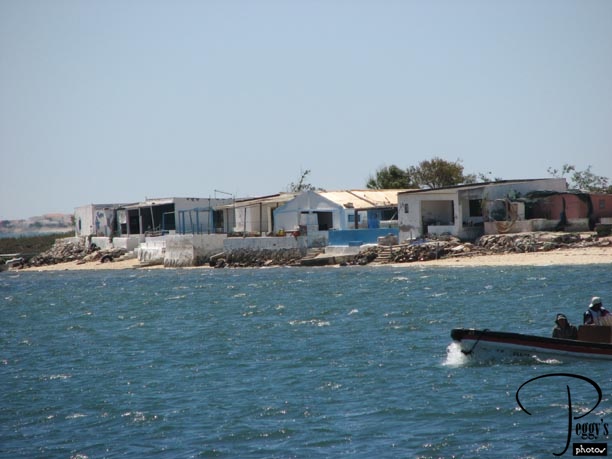
Closer–up view of the fishermen’s homes.

Olhao
Olhao

Another view of the fishermen’s homes.

Olhao
Olhao
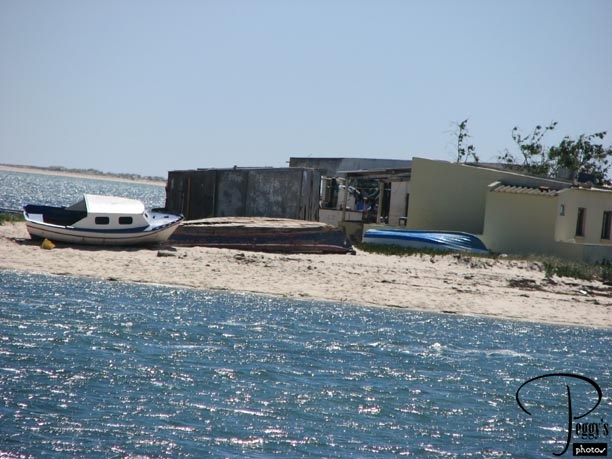
And another.

Olhao
Olhao
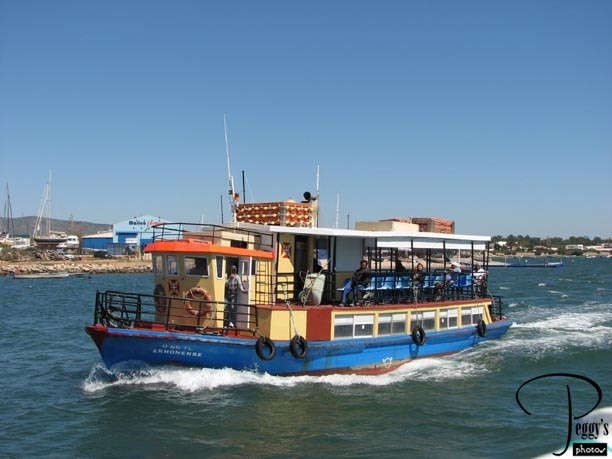
A colorful ferry passed us. The ferry transports people to the sandbars.

Olhao
Olhao
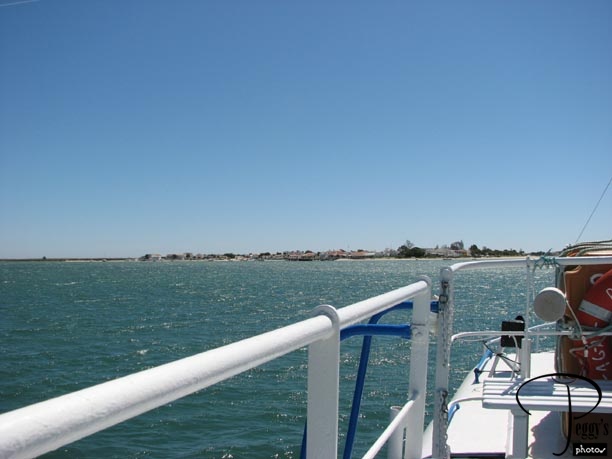
Another sandbar.

Olhao
Olhao
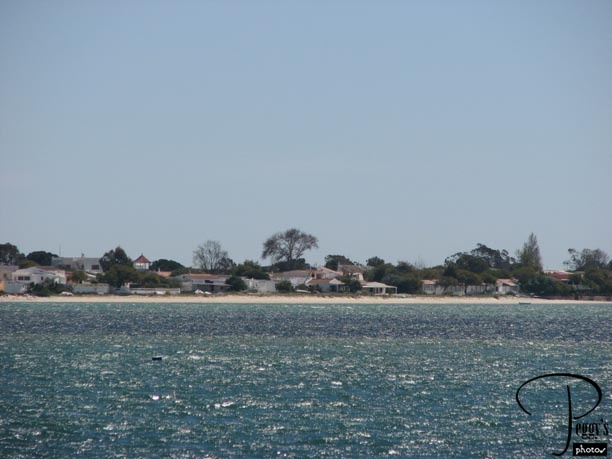
Closer–up view. There are many beach homes on this sandbar.

Olhao
Olhao
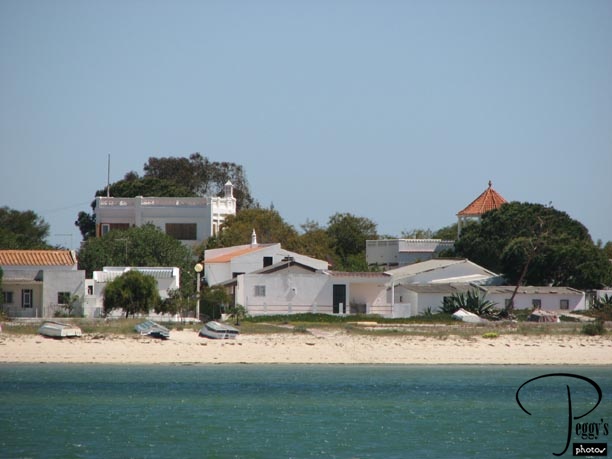
Close–up of some of the homes.

Olhao
Olhao
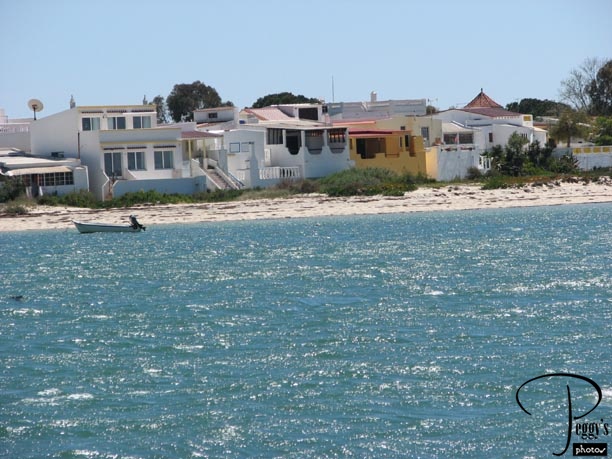
Another close–up.

Olhao
Olhao
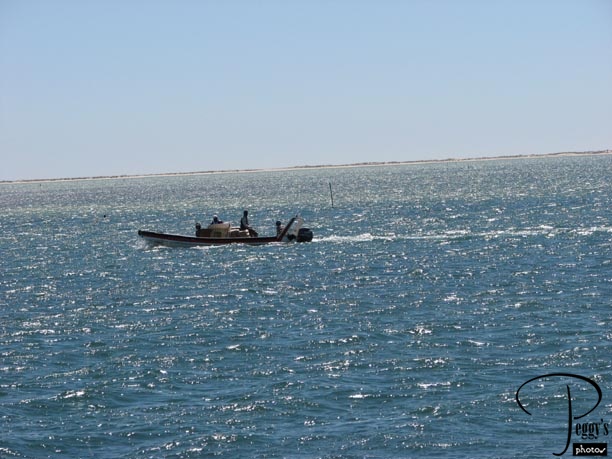
You’ll see another sandbar in this photo. If you want to go swimming in this area, you need to go to one of the sandbars.

Olhao
Olhao
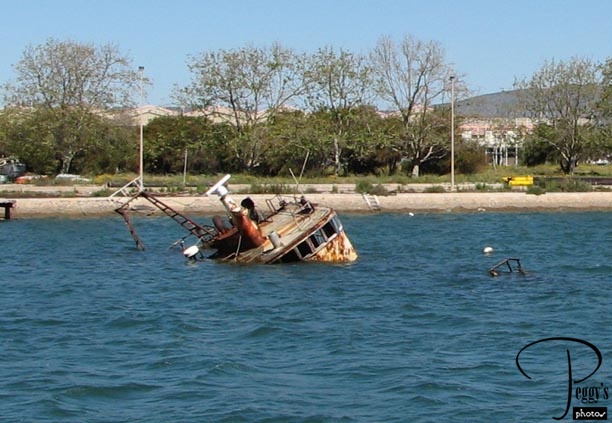
The sad end of one of the fishing boats.

Olhao
Olhao
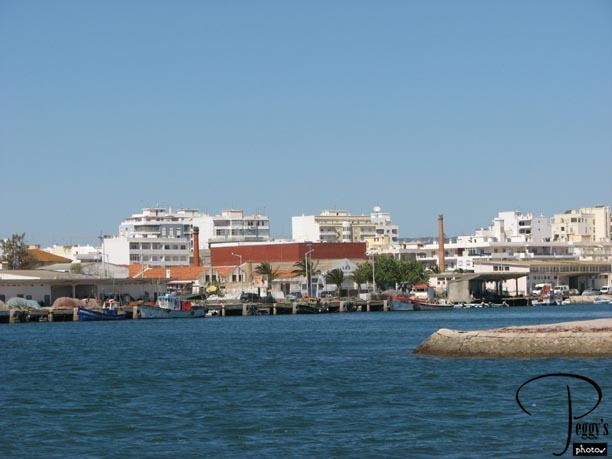
Coming back into port. We now had free time to eat lunch, either on our own or with Anna at a restaurant. She mentioned that fresh tuna was on the menu. I guess only someone from LA (me) would ask her if it was being served cooked. Yes, it was and I ordered it. It was okay. Lunch was 13 euros––tuna, potatoes, salad, bread and butter, cheese cake, wine or another drink. I ate with five other couples. The four men in my area had never met each other before, but very surprisingly to all, all of them were engineers. Two were English and still working. One was French, now living in Canada, who had worked for DeHaviland (old British aerospace company). The fourth, a Canadian, gave up engineering for a change of profession––he became a priest in the Anglican Church (I think he said the Independent Anglican Church). He is now one of the three Canadian bishops in his church. Well, since Eddie was an engineer for Boeing, I felt like I fit into this group. Mistakenly, I mentioned my feelings about Boeing losing the tanker contract to Airbus to the English man on my right and got from him a stern lecture on the need for a global economy. I decided that religion was a safer topic and gave my attention to the bishop. He told me that he goes often to Rome and of his adventures there as a married priest among the Catholic priests. I told him about already visiting Fatima––he and his wife were going there tomorrow.

Olhao
On the Road
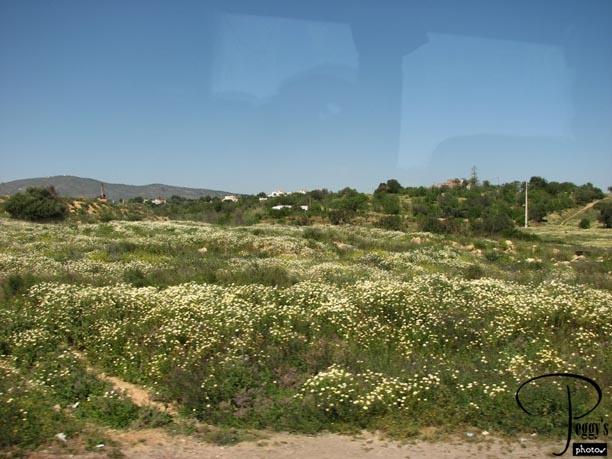
Wildflowers seen from the road.

On the Road
On the Road
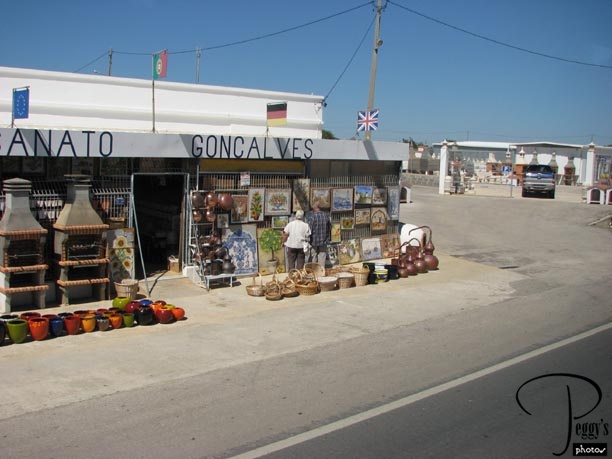
Seen on the road.

On the Road
Santa Luzia
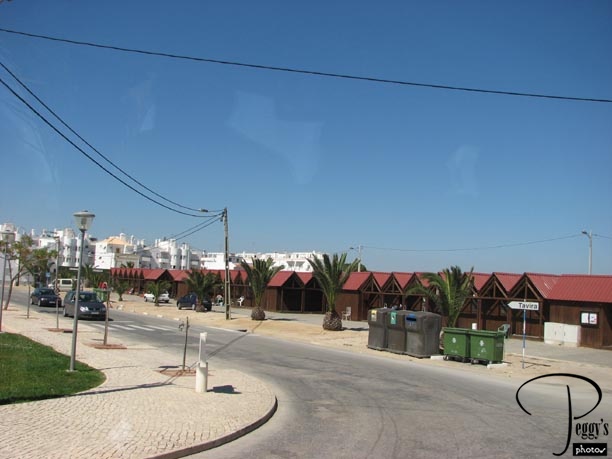
Our next stop was the fishing village of Santa Luzia. The brown buildings with the red roofs are fishermen shacks.

Santa Luzia
Santa Luzia
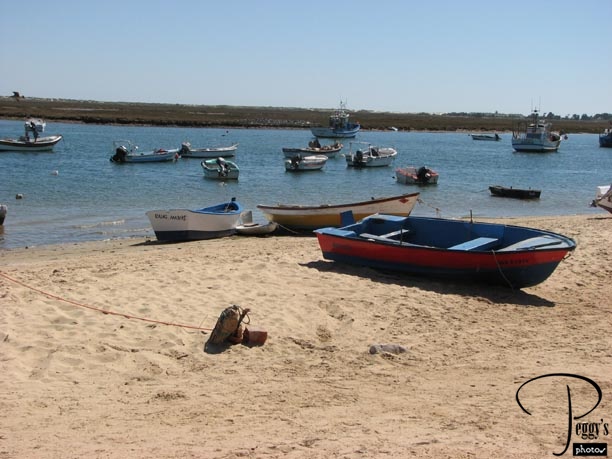
The harbor.

Santa Luzia
Santa Luzia
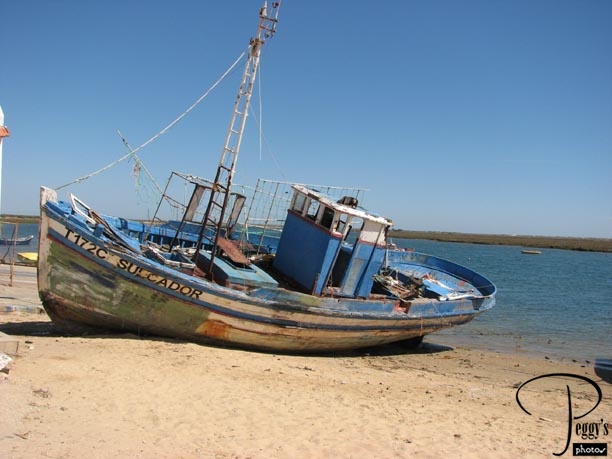
Fishing boat on the beach.

Santa Luzia
Santa Luzia
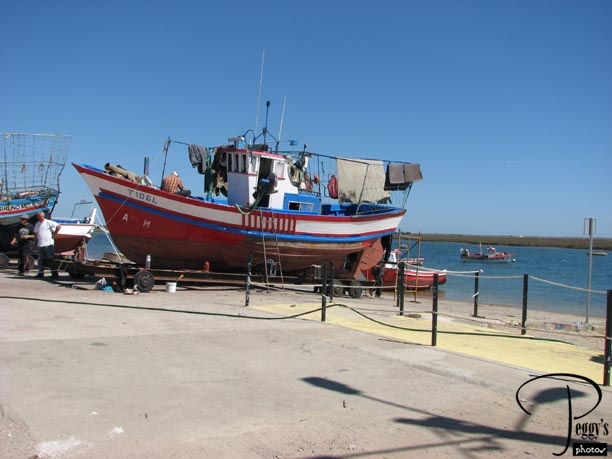
Another fishing boat.

Santa Luzia
Santa Luzia
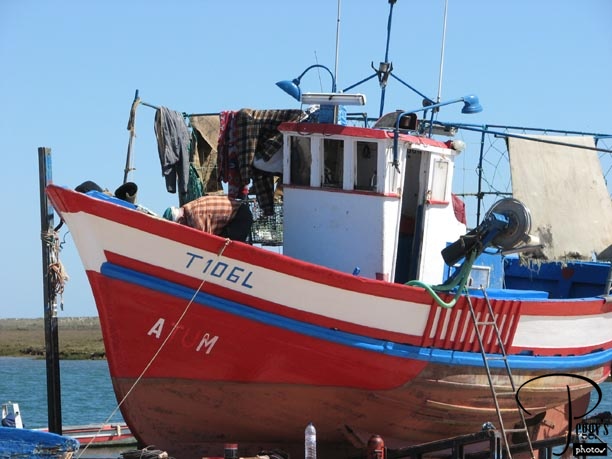
Close–up of the boat.

Santa Luzia
Santa Luzia
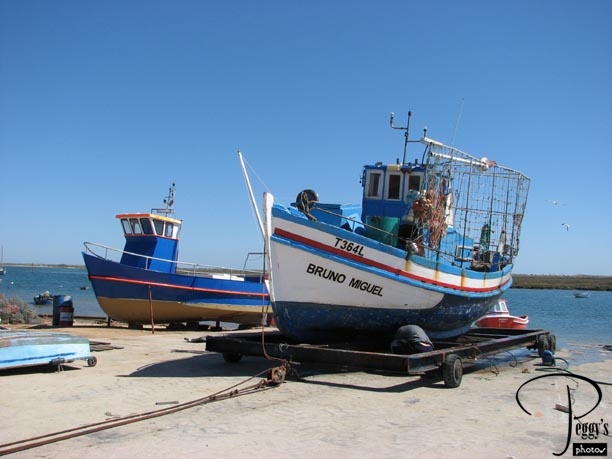
More fishing boats.

Santa Luzia
Santa Luzia
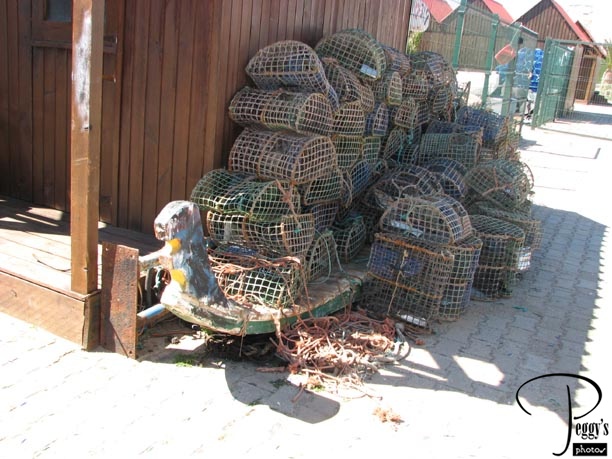
These fishermen go after octopus. Some of the octopus traps.

Santa Luzia
Santa Luzia
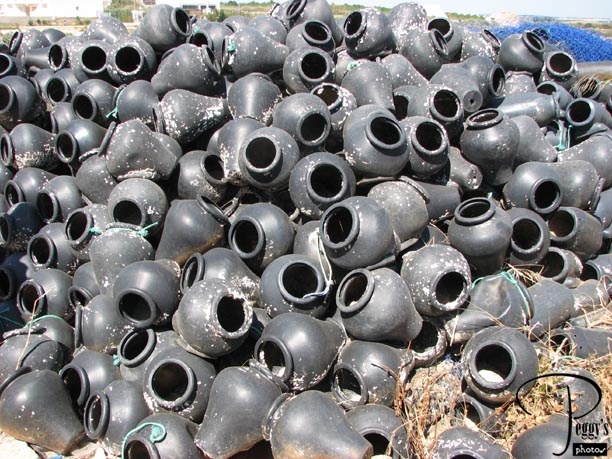
These also are used to trap octopus.

Santa Luzia
Santa Luzia
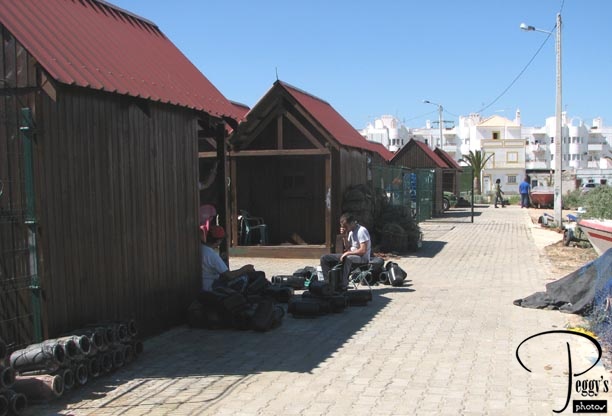
Walking past the fishermen’s shacks.

Santa Luzia
Santa Luzia
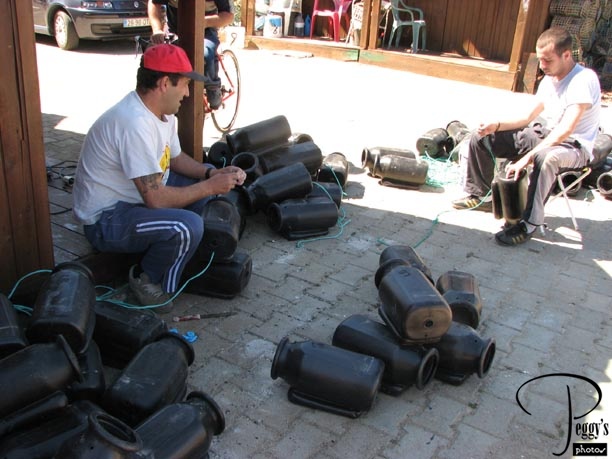
These octopus traps are of a bit different design. I do not know why the traps are different.

Santa Luzia
Santa Luzia
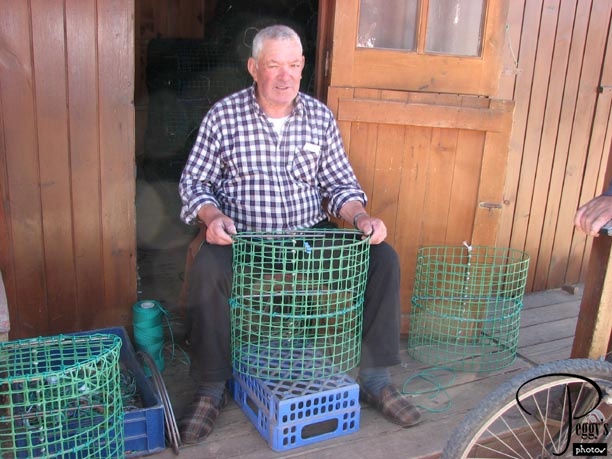
Retired fishermen make money assembling the traps.

Santa Luzia
Santa Luzia
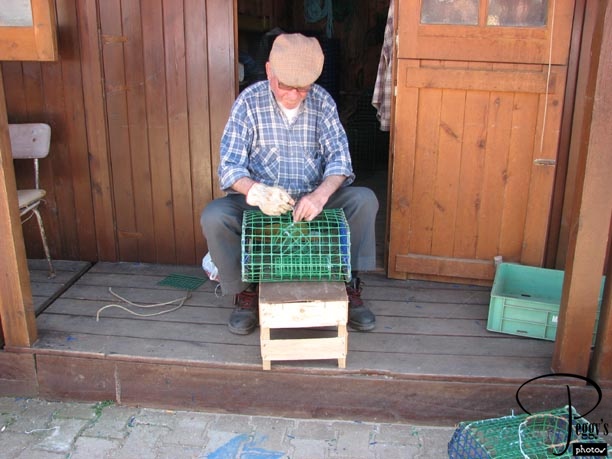
This man is assembling a differently shaped trap.

Santa Luzia
Santa Luzia
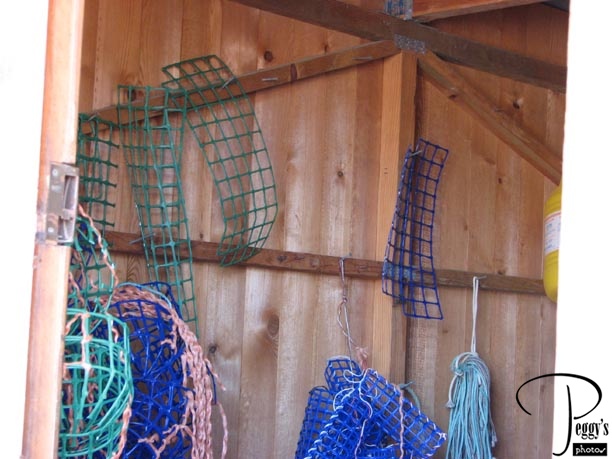
The raw trap materials.

Santa Luzia
Santa Luzia
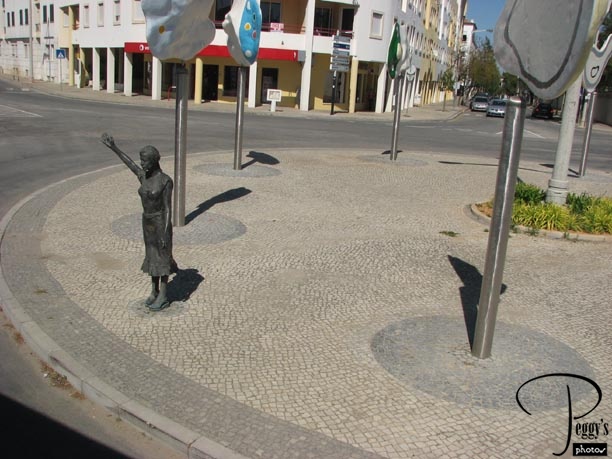
Statue waving goodbye to us as we are leaving Santa Luzia.

Santa Luzia
Santa Luzia
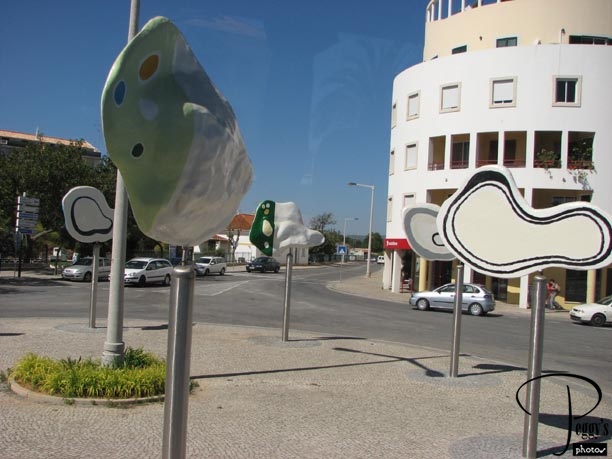
As this art is on a roundabout, I guess we can call it “roundabout art.” We drove out through the town. All its development appears to be quite new and it was quite a pretty area.

Santa Luzia
Tavira
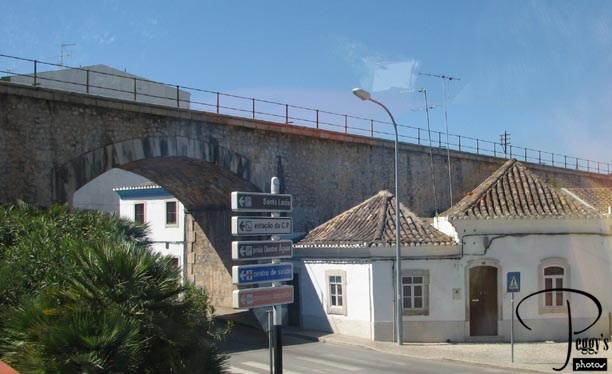
Coming into Tavira, our last stop. These four–sided roofs are called “tesouro,” meaning treasure. Their shape allows rainwater to run off easily.

Tavira
Tavira
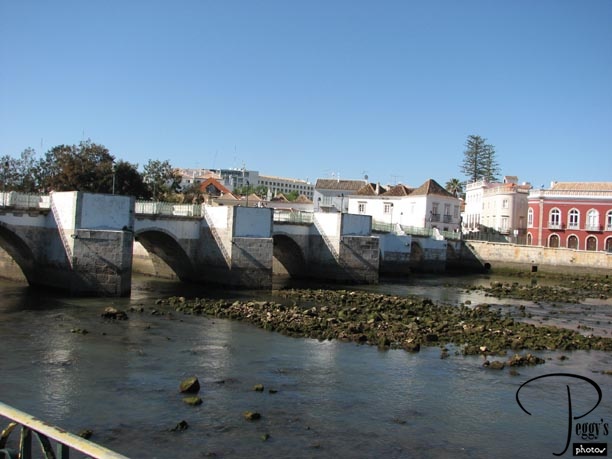
This bridge over the River Gilao is of Roman origin. It was part of the Roman road linking Faro with Mertola.

Tavira
Tavira

Houses on the River Gilao.

Tavira
Tavira
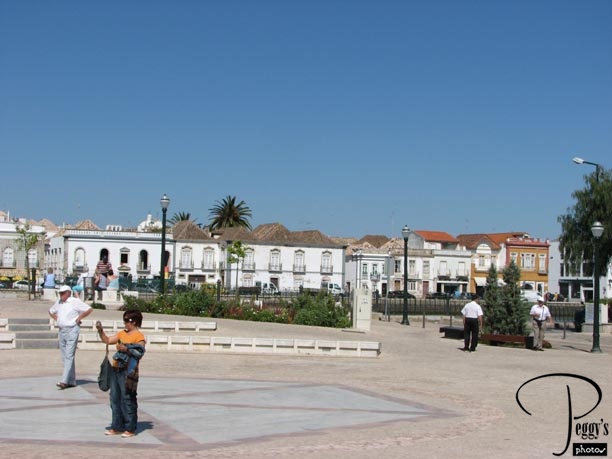
The main square. Five hundred years ago Tavira was the largest town on the Algarve.

Tavira
Tavira
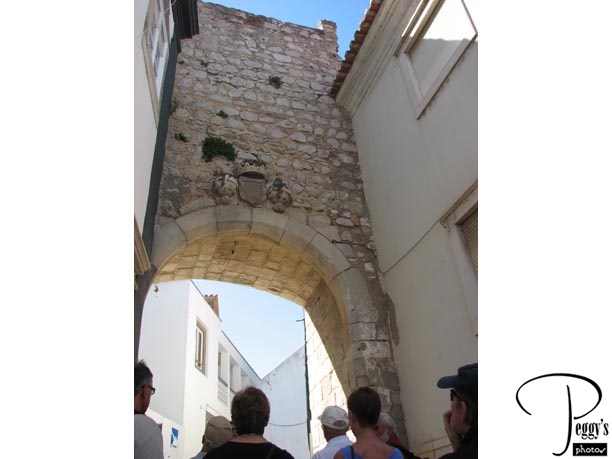
Walking through the Porta de D. Manuel, part of the town’s 16th–century walls.

Tavira
Tavira
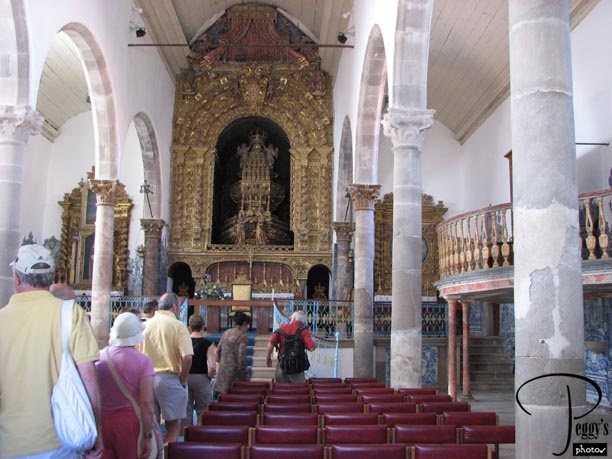
Inside the Igreja da Misericordia. Photo taken before an attendant told us not to take photos. I forgot to take a photo of the front of the church.

Tavira
Tavira
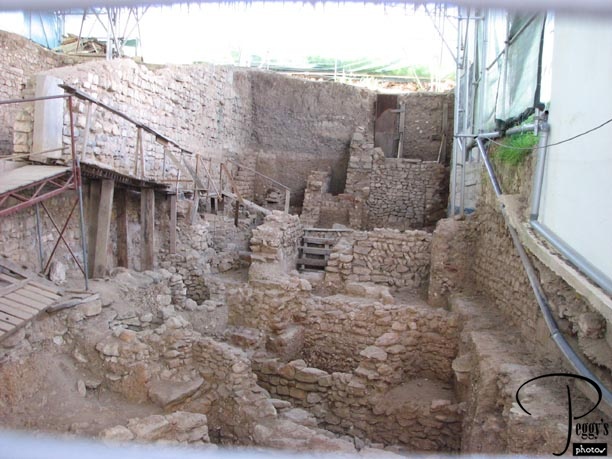
We were walking up a hill to a castle. We passed this excavation, I think of Roman ruins.

Tavira
Tavira
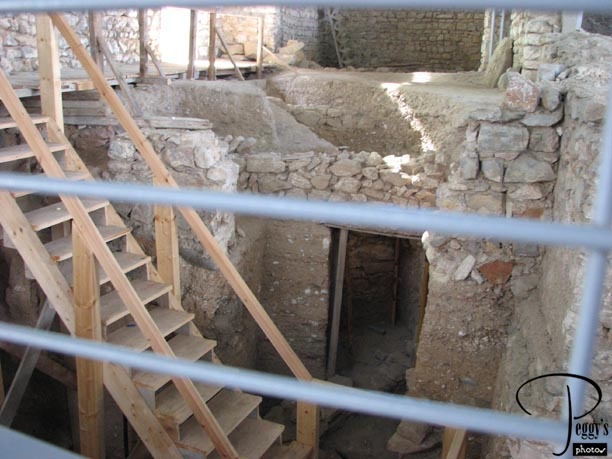
More of the ruins.

Tavira
Tavira
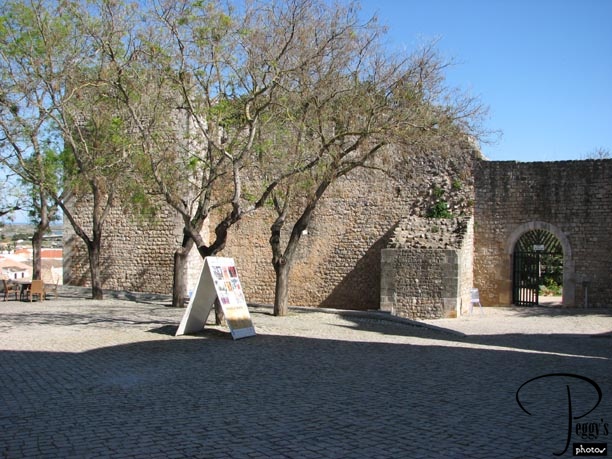
The Moorish castle at the top of the hill.

Tavira
Tavira
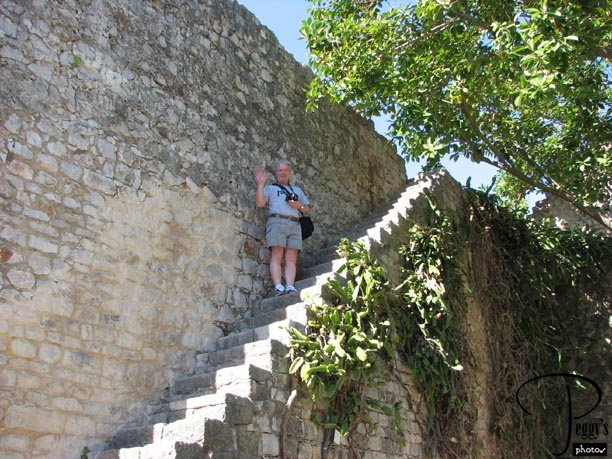
Not much of the castle remains but you can climb up to the ramparts. That’s the bishop waving.

Tavira
Tavira
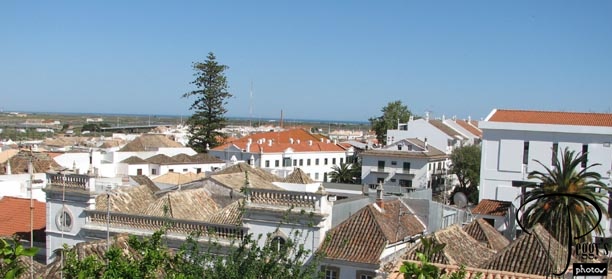
The view is good from the castle. Note the shape of the roofs.

Tavira
Tavira
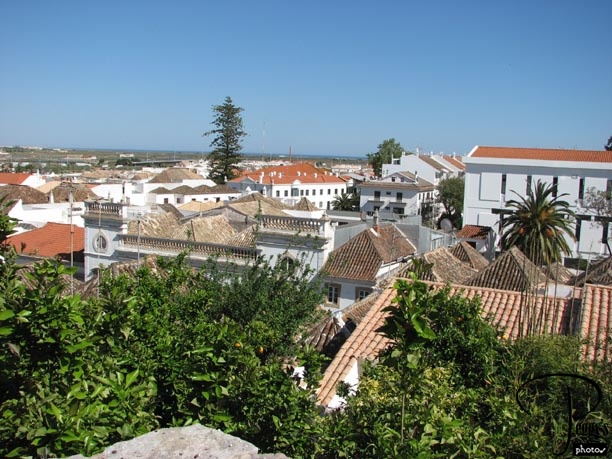
Another view from the top of Tavira.

Tavira
Tavira
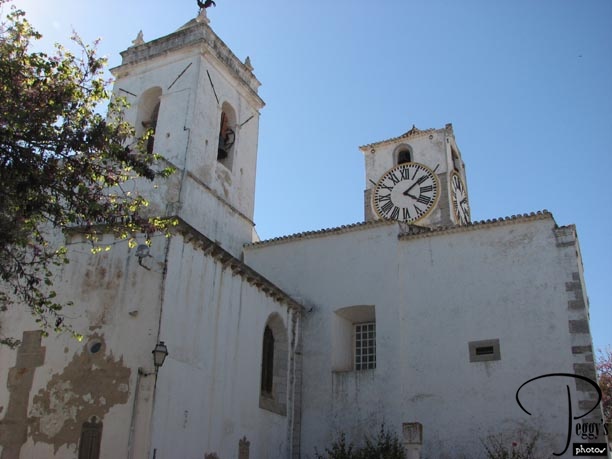
Right across from the Moorish castle is the Church of Santa Maria do Castelo. It was built on the site of a Moorish mosque.

Tavira
Tavira
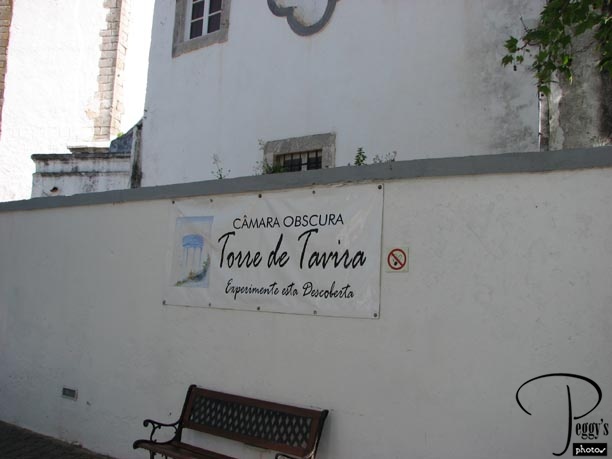
Close–by was the Torre de Tavira with a camera obscura.

Tavira
Tavira
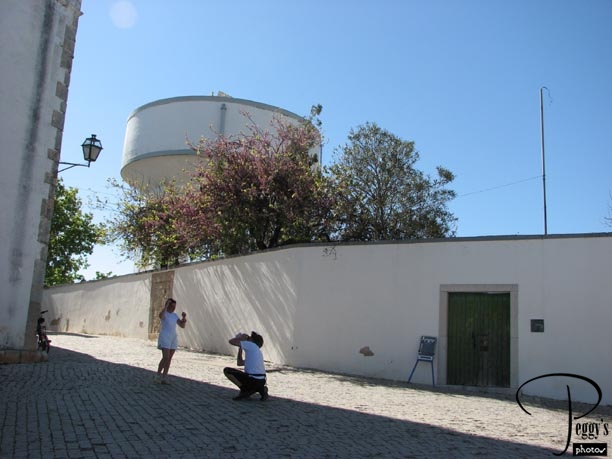
The camera obscura was inside the water tower.

Tavira
Tavira
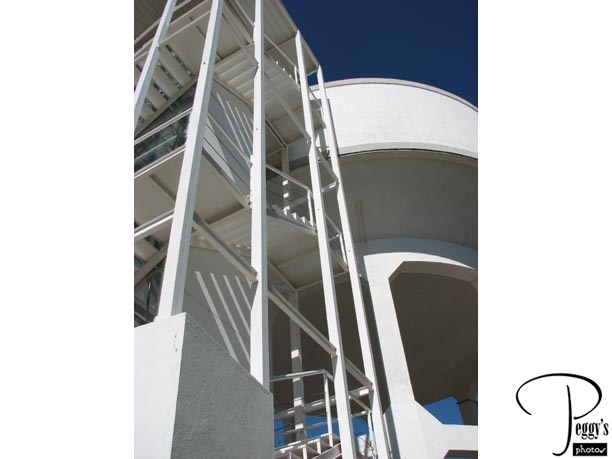
I did not remember ever seeing a camera obscura so I decided to go up to the top of the water tower to view it. I didn’t have to climb up all those steps as there was a lift.

Tavira
Tavira
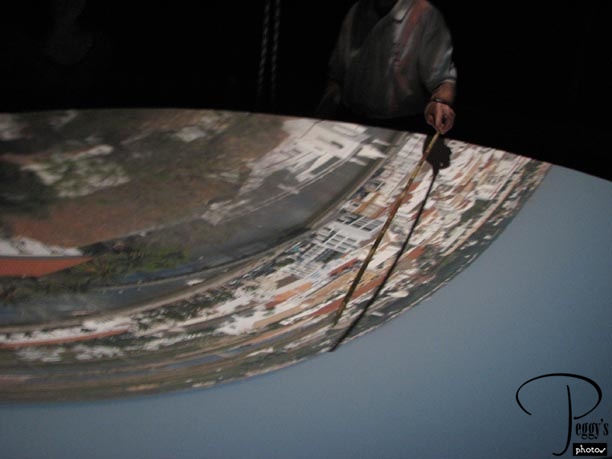
A camera obscura: in a totally dark room, images from the outside are projected onto a horizontal surface through a rotating lens. We were shown real–time views of Tavira, including people walking on the streets and cars on the highway. It was interesting, but I soon realized that I had seen a camera obscura demonstration before with Eddie, but I still can’t remember where it was, but I do know that it wasn’t inside a water tower. I goofed up what time I was to meet the tour group––at first Anna said 5:15, then changed it to 4:45. I wrote 4:45 in my notebook, forgot that I had written it down, and remembered only 5:15, so I was late to the bus and everyone was waiting for me. I felt awful, and since I was the only American on the tour and, hence, was trying very hard to make a good impression, I really felt that I had let my country down. I also now knew that after 13 straight days of sightseeing I was zoning out.

Tavira
Vilamoura

Back to Vilamoura. First, back to the Vilamoura Beach Hotel to pick up my luggage. My new hotel, the Dom Pedro Marina Hotel, was in walking distance but I took a taxi to it as the wheels of the carry–on that I had placed those three bottles of port had collasped. The taxi driver wasn’t too pleased with the short ride and overcharged me. I ate dinner at the restaurant in the photo between my hotel and another hotel.

Vilamoura
Vilamoura
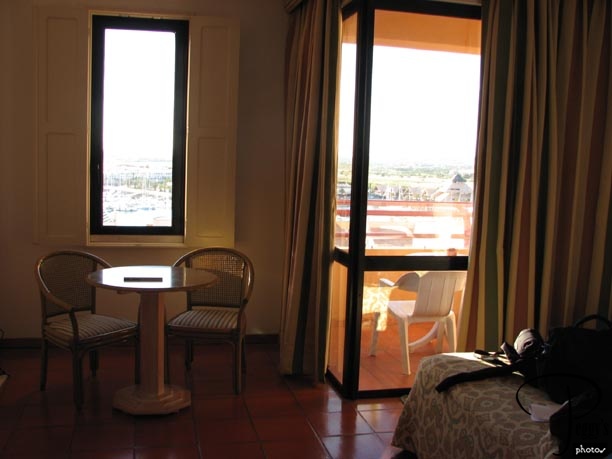
I was given a very nice room on the seventh floor with its own balcony. There was a sign on the balcony asking us not to hang out laundry on it.

Vilamoura
Vilamoura
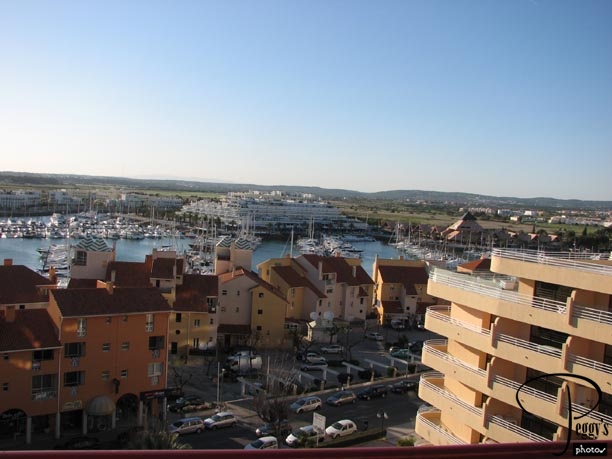
What a great view I had of the Marina from my balcony.

Vilamoura
Vilamoura
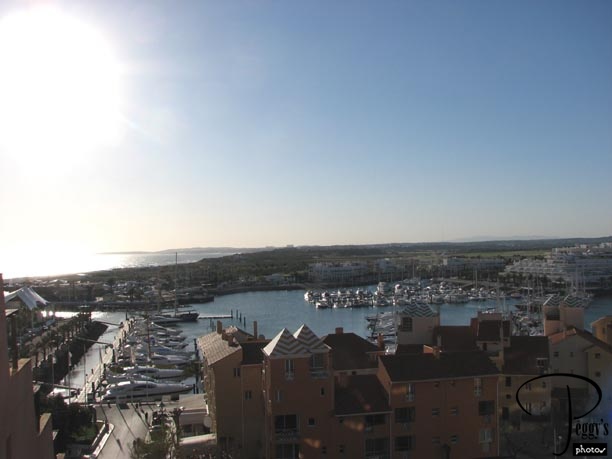
The view at sunset.

Vilamoura
Vilamoura
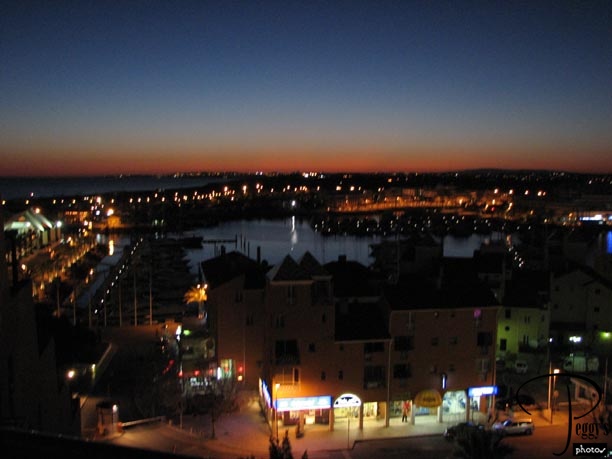
The view at night.

Vilamoura
Vilamoura
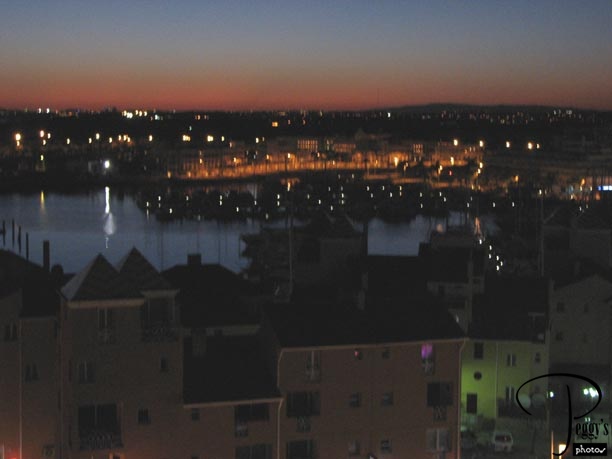
From a different angle.
